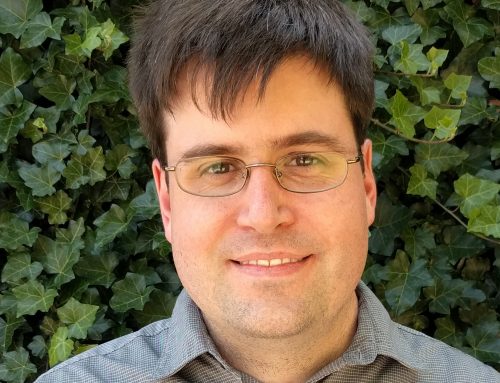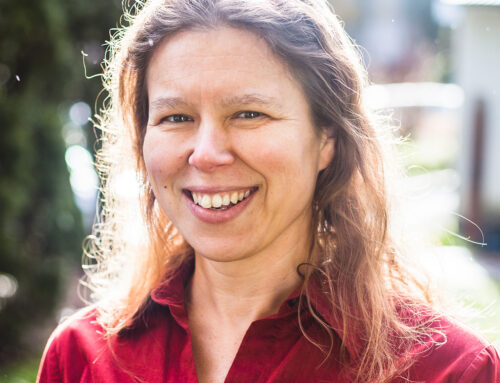[This article was adapted from a talk Eliot Grasso gave at the 2024 Education Conference: The Independent Mind.]
Pursuing truth is challenging. In a culture that is much more interested in comfort and escapism, truth—that is, reality as God sees it—is a hard sell. It is a hard sell because we love security and fear suffering, and to pursue the truth may take us well away from what is comfortable. In fact, to pursue truth—ultimately, to pursue God—may end up costing us everything. And we must have sufficient independence of mind to think and act independently of cultural norms if God requires it. And very likely, He will require it of us because we do not become Christ-like by staying as we are but by changing into what we ought to be.
The Christian life involves coming to grips with the truth about what we are—sinners in need of redemption—and what it means to be made by God and loved by Him. This transformative process is not one that we undergo as a community, culture, or even as a church—that is to say, becoming Christ-like is not like a group project in which everyone on the same team receives the same grade. Rather, each human being acts as a particular, volitional, independent self whose existence and decisions are laden with moral responsibility before God as individuals because, ultimately, no one can do my choosing but me. A person’s life is defined by how that particular individual interacts with their Creator, God.
Education is ultimately about equipping students and giving them the practice they need to interpret reality—that is, to build a true picture of reality as God sees it insofar as limited, finite sinners are able to see what God intends for them to see. But education oriented toward pursuing the truth should give students not only tools and skills but also inspire a desire to cultivate perseverance of spirit so that they can find a way to love others and love God while they grapple with a fallen world burdened with incredible limitations.
(Let me insert an important reminder: While an education oriented toward truth can certainly equip students, it cannot save them—or their cultures. Only God saves. This truth, however, does not diminish the importance of one’s education. Equipping students is incredibly valuable because this is a tough world and we need all the help we can get.)
So then, education should help students build an interpretive framework that moves in the direction of seeing reality from God’s perspective: to know what is truly good, to know what cultivates humility and obedience to God. Education should help students perceive and interpret patterns of human behavior and the movements of their own soul. But it is each student’s responsibility to decide what he or she will do with that education, how he or she will practice it over the course of a lifetime.
A good education is at root an analytical instrument designed to cultivate discipline and sensitivity in a student—the same qualities necessary for practicing an art. This is apt, for a major purpose of a good education is to live a good life, and living a good life is an art. Interpreting reality from God’s perspective requires the art of interpretation, the ability to make high-level value judgments about how parts relate to wholes.
The practice of art requires a balance of discipline and sensitivity in the service of the sound interpretation of reality. And this is exactly the goal of a Liberal Arts education: to train artists who are thoughtful, self-aware, humble, perceptive, circumspect, communicative, and earnest; and who are aware that navigating the hardships of this life is an assignment that one must face and approach with trust in God. In short, the goal of the Liberal Arts education is to foster artists who will go on to practice art.
A Biblical Example of Pursuing Truth: Nicodemus
Two thousand years ago in a far-flung corner of the Roman Empire, the Pharisees came into conflict with Jesus of Nazareth about how to interpret the Scriptures. The Pharisees came from a tradition of Scriptural interpretation that, unbeknownst to them, had come into conflict with God’s view of reality. Jesus came to address God’s chosen people and their leadership about their misinterpretation.
Jesus’s ministry was grounded in what it meant to obey God, which included loving others. The Pharisees came from a tradition that also sought to love God, but they were stymied in their practice of it by self-righteousness, fear of man, and love of this world. Out of true love, Jesus came to redress their unfortunate interpretation. In so many instances, however, the Pharisees seemed impervious to His corrections.
I am not in a position to speak about the ultimate destination of the Pharisees, but I want to note one anomaly among them whom John describes in his Gospel: Nicodemus. In his day, Nicodemus was an important man: a Pharisee; a ruler of the Jews; an interpreter of the law; a person of social position, means, and prestige. He was deeply embedded within the hermeneutical tradition of his people and the culture that surrounded it. To depart from this interpretive tradition would have meant to depart from his social position, means, and prestige. To agree with Jesus’s interpretation would have created serious friction with his powerful colleagues, his neighbors, and his culture. And this may be why Nicodemus chose to visit Jesus at night, as John notes in his Gospel. Nicodemus seems to have become curious about Jesus—he had questions about Jesus that needed to be asked under the cover of darkness, not out in the marketplace under the sun in front of crowds or with colleagues.
Nicodemus’s question to Jesus was this: “Who are you?” As his conversation with Jesus progressed, Nicodemus asked more and more questions, trying to get at the truth despite Jesus’s seemingly cryptic answers. John does not give us a psychological portrait of Nicodemus’s thoughts after the interaction, but John (19:39-40) does note that Nicodemus, along with Joseph of Arimathea, came to prepare Jesus’s body with spices and linens according to the burial customs of the Jews. The site of burial preparations for a Nazarene who died such a humiliating, brutal death was no place for a Pharisee of high position like Nicodemus. Yet so much of John’s account seems to imply that by the time of Jesus’s death, Nicodemus had come to believe that this carpenter’s son from Nazareth was, in fact, the Christ, the Messiah, the Anointed one of God.
Nicodemus began with a framework, a picture of the world informed by the interpretive traditions of the Pharisees. Yet, his willingness to pursue the truth suggests that he exercised enough independence of mind to pursue the truth in spite of what his colleagues and culture thought about Jesus.
Nicodemus seems to have sought the truth, but what does it even mean to pursue truth when a culture is already shouting the so-called truth in your ear? Doesn’t raising questions that have already been answered peg you as a fool? Doesn’t questioning the comfortable conclusions of your culture imply that you’re crazy? The world is well prepared and quick to offer answers to life’s big questions. On what grounds do we dare to doubt those answers? We dare doubt the world’s answers because they contradict God’s. The real question, then, becomes this: Will we have the courage and independence of mind to persevere in doubting the world and believing God?
Two Theories of Truth
The concept of truth in our day and age has to a large degree deteriorated into a radical form of perspectivism. You will hear people say things like “You have your truth, and I have my truth.” In this context, the speaker is simply substituting the word “truth” for other concepts like “opinion,” “feelings,” or “perspective.” When the term “truth” is misused in this way, it can be difficult to have a disciplined and clear conversation about the state of reality.
So, how do we decide if something is true? To add a bit of nuance to the question of truth, let’s consider two theories of truth: the coherence theory of truth and the correspondence theory of truth. The coherence theory assesses truth by how well all the data we have fits together and how this “fittingness” eliminates mystery and ambiguity and explains various phenomena. The correspondence theory assesses truth on how well a particular interpretation corresponds to reality even if it leaves gaps in one’s understanding. While coherence is about tight internal fittingness, correspondence is about mapping onto reality.
Let’s look at the coherence theory of truth first. Imagine you are assembling a 5,000-piece jigsaw puzzle of a world map. You hunt through hundreds of multi-colored pieces, making fine distinctions as you judge their shape and color in order to decide how they fit together. This takes a lot of time and effort. When you are finished, you have the “whole world” before you. The picture you have assembled is coherent and complete. All pieces are accounted for, and there are no gaps between them.
However, while you have before you a complete and coherent picture, what you have assembled is in fact not the world. Rather, this “coherent picture” is a grossly simplified reduction of what the actual world is. As such, it offers a very limited perspective of a very small number of things. You can see the relative positions and sizes of various countries and continents, but much is lacking. For example, the flora and fauna of the earth are nowhere to be seen in the picture you’ve assembled. The frost of the arctic and the scorching heat of the desert are absent. The roundness of the earth is compressed into two dimensions, and the ones you love and who love you in return are nowhere to be found. This coherent picture of the world is quite satisfying in the way that completing a large puzzle is satisfying. But it fails to account for the real complexity of the real world.
Yet, we often embrace a reductionistic picture of reality, believing that just because we have all the pieces neatly assembled that we therefore have the whole picture. On what basis do we trust these pictures? To ask it another way, on what basis do we doubt God and trust the world?
I believe that we settle for a merely coherent picture of reality for four reasons: (1) we are made to find intelligibility in the world; (2) we are comforted more by that which is known than by that which is unknown; (3) we believe that which we imagine we can control; and (4) we crave control because control reduces fear. We find reductionism enticing because it promises us the control we desire in order to be free of our suffering and enjoy security in this world.
Yet when we accept a reductionistic picture of reality, we are pretending to know more than we do and are thus pretending to control more than we can. The illusion of totality calms our fears and empowers us to become masters of our own destiny. And our culture encourages us to pursue this end by ceaselessly blaring through the loudspeaker of propaganda. But to embrace “mere” coherence as “total” is to believe a lie—the same kind of lie as believing that a jigsaw puzzle is the whole world.
The great (false) promise of the coherence theory of truth is this: Once we have a total picture of reality (which is achievable by man), we can harness nature to eliminate all our pain and suffering. But the coherence theory has yet to deliver on its big promise. Human beings still suffer in this world and struggle with themselves, each other, and with nature. We know more than ever before, yet experts continue to disagree about how things work in just about every field of study. Yet, we embrace the coherence theory because it helps us avoid what makes us uncomfortable: the truth about God, ourselves, and our neighbor.
Seeking coherence is natural—and not necessarily a bad thing. To try to make sense of the world around us is to hunt for intelligibility, the meaning behind how the pieces fit together. And it is sensible and natural for us to try to fit together as many pieces as we can. The problem comes when we expect too much of coherence, when we demand that the coherence we find explains things that are categorically beyond our full comprehension and so reduce the world merely to things we can comprehend. We are not always ready to admit that there may be things that we will never understand.
Now let’s consider the correspondence theory, which assesses truth by how well an interpretation corresponds to reality even if there happen to be gaps in one’s understanding. If the coherence theory of truth is insufficient, what does the correspondence theory of truth offer?
The correspondence theory accepts that knowing must be done by human knowers while acknowledging that every human knower is limited. We cannot observe everything in the universe simultaneously, which denies us a total understanding of its pieces and their relation to one another. If we accept man’s limitedness, it follows that there will always be unknowns. And if there are always unknowns, then total coherence is beyond our reach. We must, therefore, rely on correspondence. Alasdair MacIntyre puts it like this in After Virtue:
What is important […] is […] the […] unpredictability of the future of science. Physicists are able to tell us a good deal about the future of nature in such areas as thermodynamics; but they are able to tell us nothing about the future of physics insofar as that future involves radical conceptual innovation. Yet it is the future of physics which we need to know about if we are to know about the future of our own physics-based society. […] [I]f the future of mathematics is unpredictable, so is a great deal else.[1]
For a coherentist, MacIntyre’s words may be unsettling. For those relying on things like science and math to eventually give us a totally coherent picture of reality, MacIntyre’s analysis presents some real problems. After all, the understood layout of the globe changed dramatically during the Age of Exploration. The state of physics changed radically after Einstein. Who’s to say that all our observations might not need to be completely reframed when a new discovery is made? If there will always be unknowns, then we cannot be certain that the state of our knowledge will stay the same or even make any progress, for any new discovery could completely overthrow a pre-existing interpretation.
This line of thinking can result in a form of extreme skepticism that I think we should reject. I believe in the intelligibility of the universe because it was created by a rational being. However, it may be the case that man’s God-given finitude will fall short of a total understanding of reality. If that be the case, I believe that we can make real progress in our understanding and that we need not know exhaustively to know truly.
The correspondence theory of truth is humbling. It points a finger at man and declares what God has made him to be: a limited, finite creature, who although made in God’s image, has chosen to rebel against what God created him to be. It’s no wonder, then, that people are not by nature inclined to gravitate toward the correspondence theory of truth which requires that they admit their limitations and rely on God for all essential information.
Yet, if we reject what God says we are, then our interpretation of reality will suffer because we will overstep in what we can actually know. To cease our rebellion is to accept that we are beloved of God, who works all things together for the good of those who are called according to His purposes (Romans 8:28); it is to hope for redemption and salvation at the gracious and loving hand of God. The correspondence theory rejects certainty as a reasonable criterion for knowing and upgrades it to trust in God.
Conflicting Theories of Truth: Jesus and the Pharisees
The Pharisees were coherentists who came from an incredibly coherent tradition. Their picture of reality answered the major questions about God, man, and ultimate reality. For example, they believed God when He said He would send a Messiah. However, based on their interpretation, the Pharisees expected the coming Messiah to be like their kings of the past: a great military leader who would throw off oppressors (like Rome) and lead the Israelites into a brighter future. When a carpenter from Nazareth came along and said that He was the Messiah, His claim conflicted with their interpretation.
As the Scriptures describe, the Jews also had a habit of imitating the cultures around them when it came to religion and politics. At various times, the Jews were quick to abandon the one true God, erect golden calves, and worship in high places just like their polytheistic neighbors did. And though the Israelites already lived under the monarchy of God, they demanded a human king like the neighboring cultures, and God obliged their request with the awful King Saul.
So when the Pharisees think “Messiah” (God’s “Anointed,” as Saul was anointed), they have in mind an office that historically began more like a curse than a blessing. The Pharisees interpreted the accounts of the coming of Messiah more in line with the coherence theory of truth than with the correspondence theory. Their concept of Messiah was coherent: their idea of what a king was and what he should do for the Israelites was grounded on centuries of examples of kings. However, their concept of Messiah didn’t correspond to reality—that is, God’s concept of the coming Messiah as put forward by His prophets, who were usually ignored and despised.
Much of Jesus’s ministry focused on correcting the Pharisees’ wrong interpretation. In so doing, He offered commentary on fundamental issues ranging from murder to poverty. On every point, the Pharisees had a coherent set of ideas about what was right and good, the only problem being that those ideas did not correspond to God’s view of reality. Their ideas were misaligned. Jesus states multiple times that the Pharisees were bad interpreters; their framework was too reductionistic and too rigid. They were looking at a 5,000-piece jigsaw puzzle and calling it “the world” instead of seeing the real world around them and loving others appropriately.
The Pharisees clung to their “coherent” picture of the Messiah for the same reason that we often cling to our “coherent” pictures of reality: fear. The Pharisees’ own words confirm this: “If we let him [Jesus] go on like this [doing miracles], everyone will believe in him, and the Romans will come and take away both our place and our nation” (John 11:48, ESV). The Pharisees wanted to crucify Jesus because they were afraid. From their perspective, Jesus was a threat to their security in this world. Ironically, that is exactly why Jesus came: to cut the umbilical cord between them and the world so that they could have life abundantly. The Pharisees were indeed correct about Jesus’s intent: He was a threat to their place and nation. Unfortunately, they were blind to the truth that being weaned from the world was ultimately the best thing for them.
Conclusion
The goal of a Liberal Arts education (from a Christian perspective) is to create independent thinkers who are independent of the world’s propaganda, independent of their base desires, independent of their culture’s assumptions, and dependent on the will of God. A Liberal Arts education is about creating practicing artists, those who know how to generate, manipulate, or observe meaningful patterns in a skillful way.
Jesus was an artist who looked back over the patterns of God’s interactions with the Israelites and brought them together with the Scriptures to correct the Pharisees’ interpretation. Jesus is cited as an incredible teacher of Scripture—He sees the patterns of people’s hearts and wants to make them known so that they can repent of their evil ways, humble themselves, and draw near to God.
When it comes to educating our children, our students, and ourselves, what will we do? Will we fall in line with the world’s propaganda and run the rat race to the bottom of power, profit, and prestige? Will we trade our God-given humanity for Return on Investment and measurable outcomes?
I submit that we must consider Nicodemus. We must consider that truth is a risky venture and that education not grounded in the truth is no education at all. We must consider that with courage. Understanding that God—not man—is to be feared, we can pursue the truth with fear and trembling, knowing that God is for us.
End Note:
1 Alasdair C. MacIntyre, After Virtue: A Study in Moral Theory, 3rd ed. (Notre Dame, ID: University of Notre Dame Press, 2007), 94-95.
This article first appeared in print in the Spring 2025 issue of Colloquy, Gutenberg College’s free quarterly newsletter. Subscribe here.





